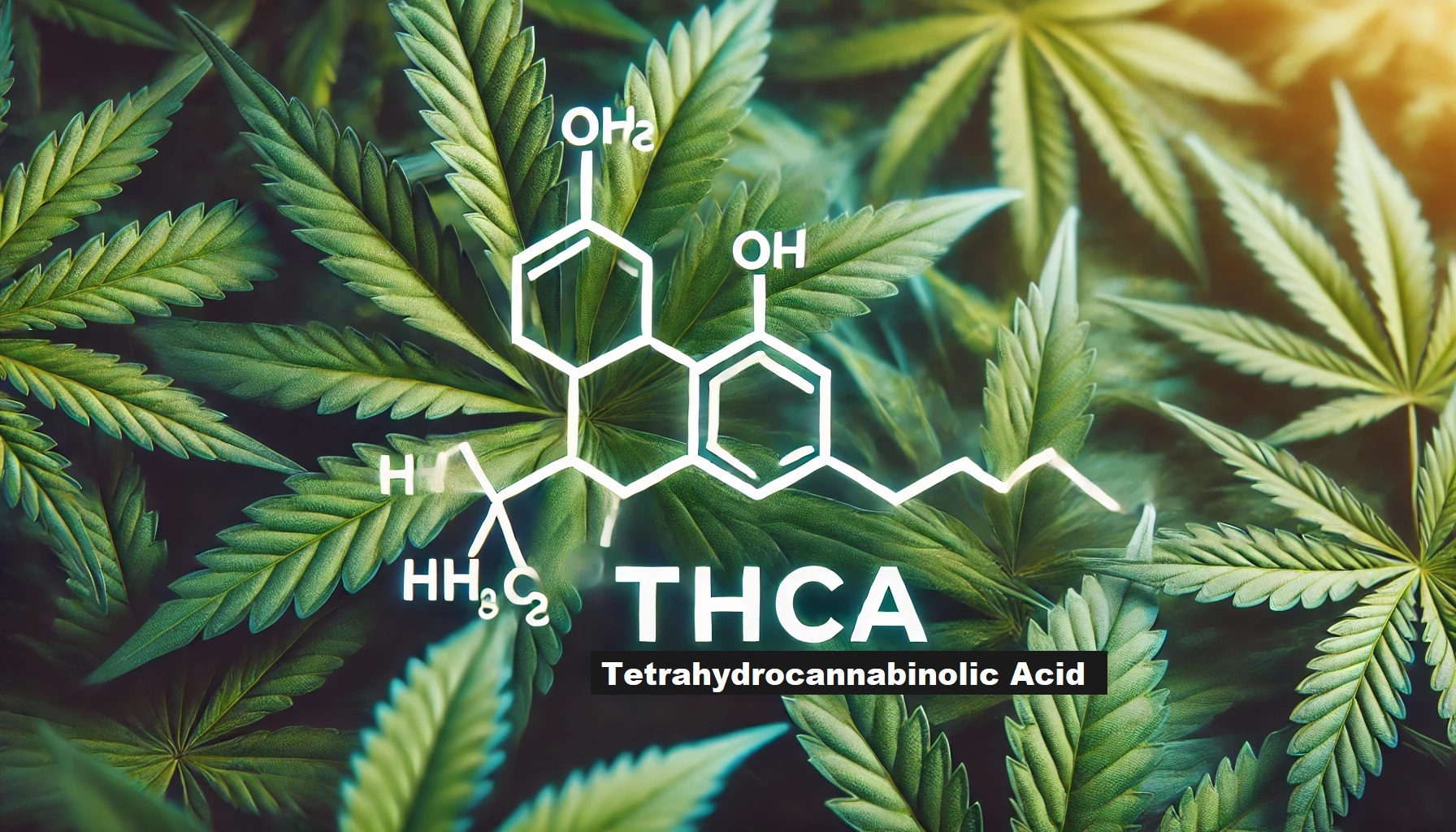Health Notice: This article was written using the Consensus AI Academic Search Engine. It is intended solely for informational purposes and should not be considered medical advice. Always consult a licensed healthcare provider for diagnosis, treatment, or medical guidance. Please refer to the full Disclaimer at the end of this article.
Tetrahydrocannabinolic acid (THCA)
THCA is a significant cannabinoid in the cannabis plant, serving as the precursor to the psychoactive THC. While THCA itself is non-psychoactive, it has shown promising therapeutic potential in various studies. Understanding the biosynthesis, structure, and function of THCA, as well as its detection and quantification, is essential for both scientific research and practical applications in medicine and forensics.
Tetrahydrocannabinolic acid (THCA) is a non-psychoactive cannabinoid found in the cannabis plant. It is the precursor to tetrahydrocannabinol (THC), the primary psychoactive component of cannabis. THCA is synthesized in the glandular trichomes of the cannabis plant and undergoes decarboxylation to form THC when exposed to heat. This article explores the structure, function, biosynthesis, and potential therapeutic applications of THCA.
Structure and Function
THCA is synthesized from cannabigerolic acid (CBGA) through the action of the enzyme THCA synthase. The enzyme catalyzes the oxidative cyclization of CBGA into THCA, which is then stored in the glandular trichomes of the cannabis plant1. The structure of THCA synthase has been determined through X-ray crystallography, revealing that it belongs to the p-cresol methyl-hydroxylase superfamily and contains a flavin adenine dinucleotide (FAD) coenzyme1.
Biosynthesis and Secretion
THCA is produced in the glandular trichomes of cannabis plants. The exclusive expression of THCA synthase in these trichomes has been confirmed through reverse transcription-PCR (RT-PCR) analysis. The enzyme is secreted into the storage cavity of the trichomes, where it catalyzes the conversion of CBGA to THCA2. Transgenic studies have shown that THCA synthase can be expressed in other organisms, such as Pichia pastoris, with high efficiency9.
Decarboxylation and Psychoactivity
THCA itself is non-psychoactive and does not elicit the psychoactive effects associated with THC. However, when exposed to heat through processes such as smoking, baking, or vaporizing, THCA undergoes decarboxylation to form THC, which is psychoactive3. This decarboxylation process is a key step in the consumption of cannabis for its psychoactive effects.
Therapeutic Potential
Despite its non-psychoactive nature, THCA has shown potential therapeutic benefits. In vitro studies suggest that THCA interacts with various molecular targets and exhibits anti-inflammatory, immunomodulatory, neuroprotective, and antineoplastic properties3. Additionally, THCA has been shown to alleviate collagen-induced arthritis in animal models, potentially through its action on PPARγ and CB1 receptors10.
Detection and Quantification
THCA can be detected in biological fluids such as blood and plasma, and its presence can serve as a marker for cannabis consumption. Reliable methods for the quantification of THCA in biological samples have been developed using techniques such as liquid chromatography-tandem mass spectrometry (LC-MS/MS)4. These methods are crucial for forensic analysis and distinguishing between the use of prescribed THC medication and cannabis products containing THCA.
Disclaimer
The content in this blog post was generated using Consensus, an AI-powered academic search engine, and is based on publicly available scientific literature. While we strive to provide accurate, up-to-date, and well-researched information, this content is intended for informational and educational purposes only.
It does not constitute medical advice, diagnosis, or treatment. Always consult a qualified healthcare professional before making decisions related to any medical condition, treatment, or medication.
The AI system’s analysis may not account for all perspectives, ongoing research, or individual circumstances, and should not replace professional expertise. Neither the blog publisher nor the developers of the Consensus AI tool are liable for any decisions or actions taken based on this content.
Use of this information is at your own risk. Where provided, citations link to original scientific studies for reference only—these should be reviewed independently and interpreted with the support of a qualified medical or research professional.
If you are experiencing a medical emergency, please seek immediate care from a healthcare provider or call emergency services.
